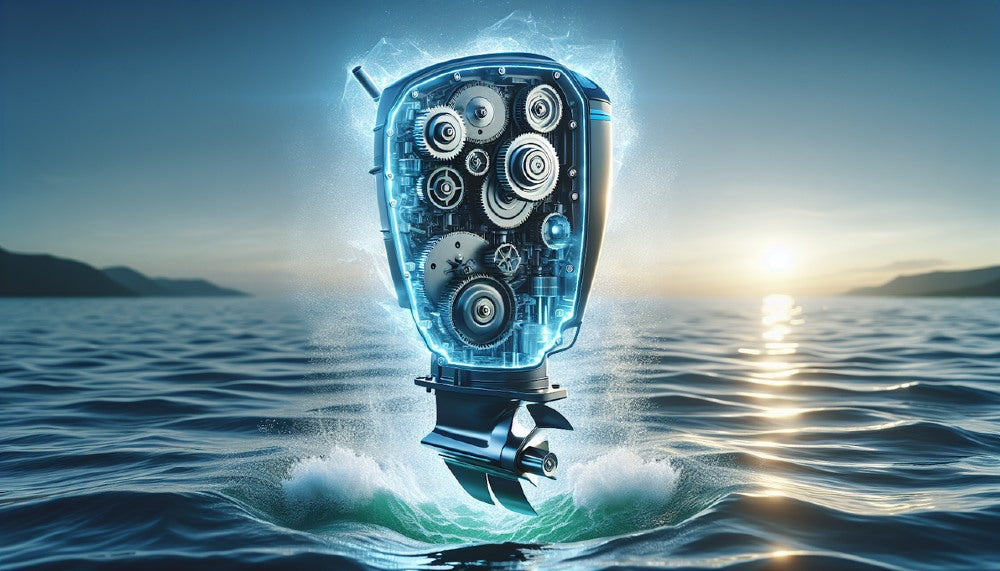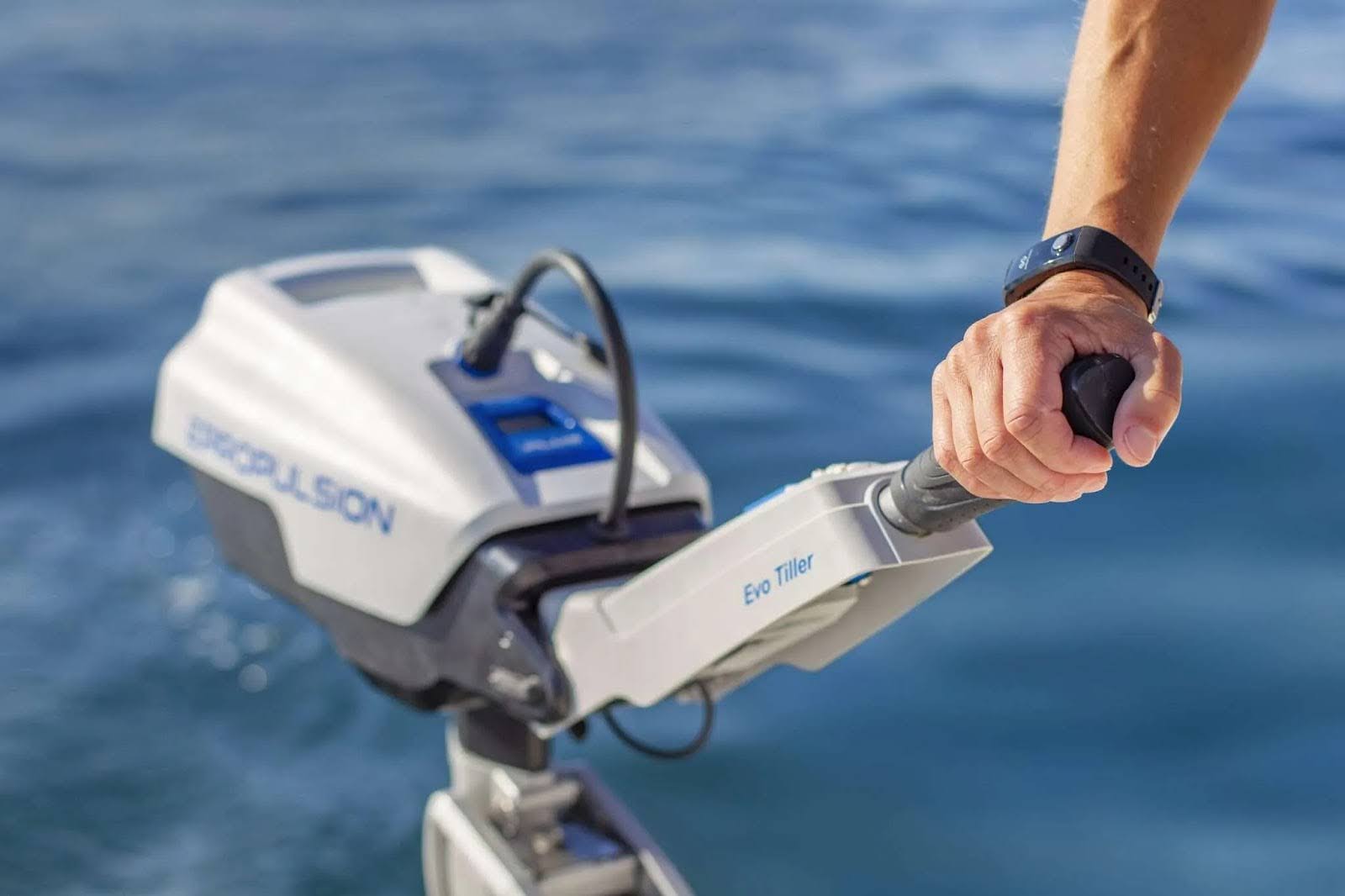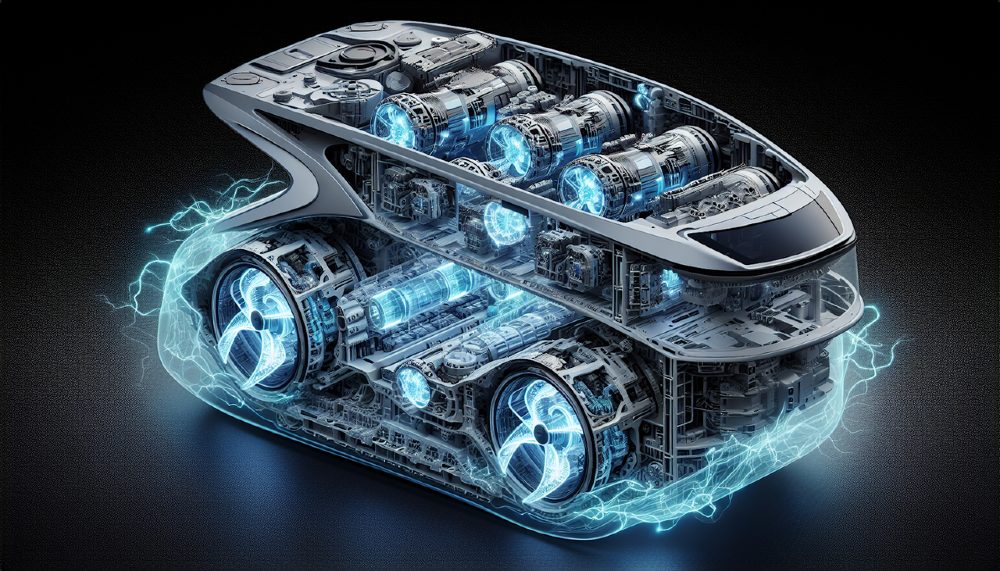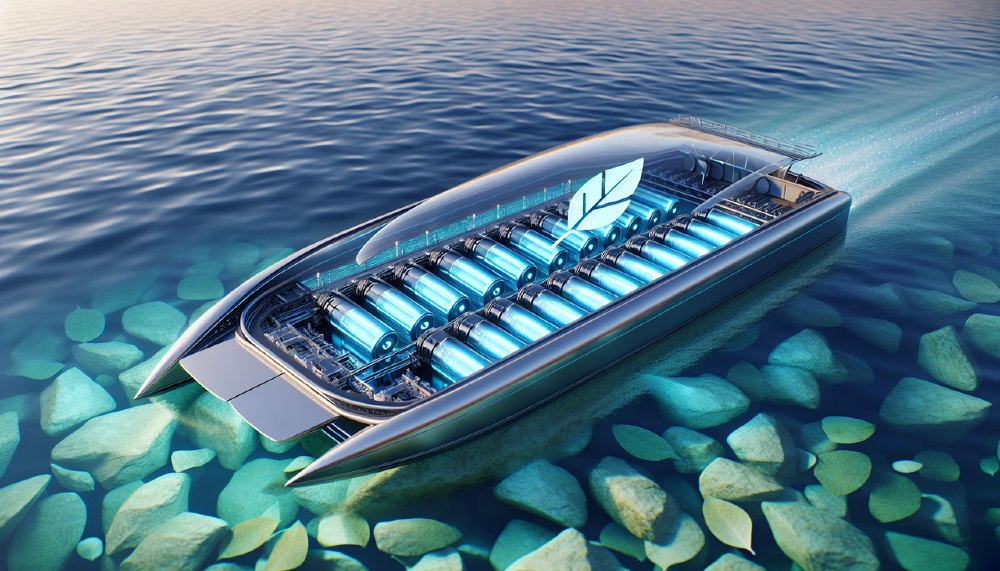
Effortless Guide to Convert Outboard Motor to Electric: Embrace Quiet, Clean Power on the Water
Wondering how to convert an outboard or inboard motor to electric? This no-nonsense guide walks you through the conversion—from understanding the eco-friendly and cost-effective gains to executing the technical switch for both outboard and inboard systems. Equipped with practical steps and expert tips, your transition to electric boating starts here, promising a quieter, cleaner ride on the waves.
Key Takeaways
- Converting an outboard motor to electric reduces emissions, noise, and maintenance while offering instant torque and cost savings, especially amidst rising environmental regulations that favor such technology.
- The conversion process involves meticulous planning, choosing the right electric motor system, complying with local regulations, and ensuring proper installation and integration for optimal boat performance.
- Post-conversion considerations for electric boats encompass choosing reputable brands for quality, understanding battery and charging options for sustained operation, adhering to safety standards, and performing regular maintenance for durability.
Why Convert Your Outboard Motor to Electric?

In sync with the current environmental consciousness, electric outboard motors are gaining momentum as viable alternatives to traditional combustion engines for various boat types. Organizations such as Navigator Inflatable Boats are championing this shift, educating and promoting the integration of cleaner alternative energies into everyday boating practices, including the use of electric boat outboard and electric inboard motors.
The appeal of electric propulsion is clear:
- Zero emissions
- No exhaust
- Absence of noise and smell
- Less maintenance due to fewer moving parts and direct-drive technology.
This shift is even more pronounced in regions with restrictions on internal combustion engines, where the use of electric outboard motors is on the rise, indicating a significant shift towards more environmentally friendly boating solutions.
But the allure of electric conversion extends beyond its environmental benefits. The performance advantages and cost savings offered by electric boats make it an attractive option for boat owners. We will now explore these advantages in greater detail.
Environmental Benefits
Electric outboard motors are a breath of fresh air, literally. They eliminate exhaust emissions, contributing to cleaner air by preventing the release of harmful substances such as:
- carbon monoxide
- hydrocarbons
- particulate matter
- nitrogen oxides
This ensures a pollution-free environment, benefiting both passengers and surrounding wildlife.
Additionally, these motors improve water quality as they operate without fuel and minimal oil, significantly reducing the chances of water pollution. Combining this with the integration of solar panels into the electric boating system, a sustainable and eco-friendly approach is forged, harnessing renewable energy to charge batteries.
The use of lithium-ion batteries further positively impacts water quality and causes less environmental stress.
Performance Advantages
From the moment you push the throttle, electric motors display their superiority. They provide:
- Instant torque, leading to responsive acceleration and powerful performance from the get-go.
- Enhanced maneuverability.
- Instant starting, without the need for a warm-up time.
This simplifies the boating experience and ensures a seamless and efficient ride.
The advantages of electric propulsion include:
- The silence of the electric propulsion, offering a peaceful boating experience without compromising power.
- Highly energy-efficient electric motors, converting more input energy into motion with minimal waste as heat.
- Cost-effective operation over time.
- Torqeedo electric motors standing out for their efficiency, offering an extended range for longer trips on the water.
Cost Savings
Beyond the performance and environmental benefits, the transition to electric boats is a financially sound decision. Electric motors offer several advantages in terms of maintenance and cost:
- Electric motors, devoid of traditional gearboxes, experience reduced wear and tear, resulting in fewer maintenance needs.
- The simplicity in design, like the patented Gearless technology, means electric motors require less frequent maintenance than their gasoline counterparts.
- Routine maintenance tasks such as oil changes and spark plug replacements are not necessary for electric boat motors, further diminishing overall maintenance costs.
The cost benefits of electric outboard motors include:
- Considerable fuel cost savings over time compared to traditional petrol outboards.
- Absence of ongoing expenses like annual maintenance fees and fuel costs
- Recouping of the initial investment.
- Cumulative savings in fuel, maintenance, and operating expenses over the hours of operation.
These benefits can surpass the initial higher cost of electric boat motors.
Conversion Process: Step-by-Step Guide
Having understood the reasons, it’s time to understand the process. Converting your outboard motor to electric may seem daunting, but with some planning and the right approach, it’s a manageable process. Start by researching all local regulations and compliance standards related to marine electrical systems. Acquire a thorough understanding of the system components like the motor controller, throttle, and battery management system.
Choosing the right electric motor system is a crucial part of the conversion process. Look for one that meets ABYC standards at a safe 48Vdc low voltage. This should include components such as a key switch, neutral locking throttle, and a battery monitor display indicating state of charge, voltage, motor speed, and power consumption. However, before making this decision, it’s crucial to evaluate the requirements of your boat.
Assessing Your Boat's Needs
The first step in the conversion process is assessing your boat’s needs. The power of the electric motor should be enough to handle heavy seas or wind gusts, balanced with considerations of battery size and cost. Keep in mind that propeller efficiency and mechanical and motor controller losses can result in less than half of the consumed power being used for actual propulsion.
Estimating power requirements can be done by:
- Comparing with the current thermal engine’s power
- Consulting boat manufacturer resistance curves
- Using theoretical calculation tools for power curves in varying sea conditions
A baseline for battery size can be a 1:1 ratio between kW of engine power to kWh of battery capacity, with scalability for expansion, particularly for LiFePO batteries. For small boats, carrying a portable generator as a safety backup is advised.
Choosing the Right Electric Motor System
Having assessed your boat’s needs, the next step is choosing the right electric motor system. Electric motor power is measured in pounds (lbs) or kilowatts (kW), with electric motors providing up to 8 hp, indicating suitability for calm water usage. The boat’s laden weight determines the power requirement from the electric motor, which varies with different boat types and sizes in terms of lbs to horsepower equivalence.
Aside from power, the battery capacity, measured in ampere-hours (Ah), must match the motor’s power to avoid rapid battery depletion, especially under continuous maximum speed operation. The weight of the battery has a significant impact on boat performance and range, emphasizing the need for careful selection to align with the electric motor system. A compact and lightweight electric motor design contributes positively to the boat’s overall performance and eases the process of installation and transportation.
Implementing a variable voltage regulator can increase system efficiency by up to 50%, but may also add to the cost of the electric motor system.
Installation and Integration
Once you’ve chosen the right electric motor system, the next step is the installation and integration process. This may involve adapting the boat’s design to accommodate the electric motor system, which may involve modifying the transom or building custom mounts for batteries and electronics. The weight of batteries and motor should be balanced to maintain the boat’s center of gravity and stability, which may require redistributing other equipment or adding ballast.
The installation process also involves managing power distribution. Here are the steps to follow:
- Install a marine-grade main battery disconnect switch to manage power and ensure the ability to turn off everything at once or combine batteries for charging.
- Use a terminal block as a breakout point for switch outputs.
- Use a bus bar to complete the circuits, connecting all positive wires from the switch panel to the appropriate gang on the terminal block, and all negatives to the bus bar.
By following these steps, you can effectively manage power distribution in your installation.
Understanding the boat’s existing wiring infrastructure is crucial to correctly connecting the new electric motor system, ensuring all loads are properly powered and grounded. To do this, follow these steps:
- Implement correct electrical wiring and grounding using marine-grade materials.
- Insulate circuits with appropriate protection devices like fuses and circuit breakers to prevent overloads.
- Install adequate ventilation for battery compartments to prevent the accumulation of gases and ensure proper cooling.
- Use thermal management solutions to regulate the temperature of batteries and electric motors.
- Equip the boat with a fire suppression system in areas where batteries and electrical systems are housed.
By following these steps, you can ensure a safe and efficient electric motor system installation.
Top Electric Motor Brands for Conversions

Choosing the right brand for your electric conversion can make a significant difference in your boating experience. Top brands like ePropulsion, Torqeedo, and Oceanvolt offer a range of options for various boating needs and have been recognized for their commitment to quality and innovation in the field of electric propulsion.
Furthermore, brands like Navigator Inflatable Boats demonstrate their commitment to electric boating through the conversion of their own gas-powered inflatable boats into fully electric vessels, and selling “plug and play” conversion options to simplify the conversion process. Next, we’ll explore the offerings of each of these brands.
ePropulsion

ePropulsion specializes in electric marine propulsion and offers a range of electric outboard and pod drive systems for various boating needs. The ePropulsion range includes the Navy series suitable for a broad array of boats and offers additional higher power options catering to larger vessels.
Aside from offering a variety of power options, ePropulsion motors are equipped with a direct drive system that eliminates transmission losses for increased efficiency. For smaller crafts, the Spirit 1.0 Plus model offers portability and ample power, making it a popular choice among small boat owners.
Torqeedo
Torqeedo is another brand that stands out in the realm of electric outboard motors. Torqeedo electric motors, including trolling motors, are effective substitutes for thermal engines in calm water environments, illustrating a closing performance gap. The brand’s Cruise series provides flexible boat handling with models that feature remote throttle or tiller controls.
What sets Torqeedo apart is their focus on optimizing their products for either increased thrust or higher speed, depending on the model. They also cater to specific needs, like their Ultralight series designed specifically for kayak enthusiasts, offering a lightweight and efficient propulsion option.
Oceanvolt

Oceanvolt is a company that specializes in hybrid and electric marine power and propulsion systems, offering zero emissions, no exhaust, no noise, and no smell. They offer a seamless system integration with integrated components, aided by skilled technicians for compatibility and optimized software.
The AXC series from Oceanvolt provides modular electric motors that can be combined to meet higher power requirements for larger boats. Oceanvolt systems are engineered to integrate smoothly with existing boat controls, facilitating ease of transition to electric propulsion for boat owners.
Temo
Temo is emerging as a versatile player in the electric outboard motor landscape, focusing on the needs of medium-sized watercraft. Their signature product, the Temo 450, is designed for dinghies, tenders, and small sailboats, offering an innovative approach to portable propulsion. With an emphasis on ease of use and lightweight design, Temo's solutions are gaining popularity among sailors and casual boaters seeking a convenient, eco-friendly alternative to traditional petrol outboards.
ThrustMe
ThrustMe propels the electric boating market forward with its advanced outboard solutions tailored for medium-sized boats. Their commitment to innovation is evident in their ThrustMe Kicker 1000W series, which provides boaters with a powerful yet silent propulsion system. Designed to be user-friendly and maintenance-free, ThrustMe motors are an excellent choice for those looking to upgrade their boating experience with electric technology.
RDT
RDT makes a splash in the electric boating world with compact and efficient propulsion systems. Their focus on small-scale boats has led to the creation of the RDT Mini, a motor known for its reliability and ease of installation. Ideal for kayakers and owners of small inflatables, RDT's products are a testament to the potential of electric power in enhancing the simplicity and enjoyment of water-based activities.
Bluenav
Bluenav enters the arena with their specialized electric propulsion systems designed for small to medium-sized boats. Their commitment to sustainability and marine conservation is reflected in their Bluenav Cruiser series, which offers a clean and quiet boating experience without compromising on power. With a focus on innovation and eco-friendliness, Bluenav is quickly becoming a go-to choice for environmentally conscious boaters.
Rad Propulsion
Rad Propulsion is revolutionizing the way we think about electric boat motor, particularly for small watercraft. Their Rad Mini series boasts a sleek design and impressive efficiency, making it a favorite among eco-friendly adventurers. With a dedication to creating motors that are both powerful and portable, Rad Propulsion is propelling the boating industry into a new era of sustainability. Their innovative approach ensures that even the smallest boats can enjoy the benefits of electric propulsion, offering a clean and quiet experience on the water. Whether you're navigating serene lakes or coastal inlets, Rad Propulsion's technology is engineered to enhance your journey with minimal environmental impact.
Battery and Charging Options
A significant part of your electric conversion journey is understanding the battery and charging options for electric boats. The environmental impact of the sourcing and disposal of batteries for electric boats warrants consideration - with an emphasis on adhering to proper recycling methods for sustainability and safety.
When it comes to powering your electric boat, two primary factors need attention: the kind of batteries you will use and their charging methods.
Lithium-Ion Batteries

Lithium-ion batteries are the preferred choice for electric boats due to their:
- Superior capacity
- Higher efficiency
- Longer life cycle
- Lighter weight
Compared to other battery types. These batteries are known for their high-quality energy storage, effective current delivery, resilience in charge capacity, and dependable performance across a wide temperature range.
While the initial cost of lithium-ion batteries is higher, the long-term benefits in terms of performance, lifespan, and maintenance make them a cost-effective choice in the long run.
Charging Methods
Charging your electric boat can be done through various methods, providing flexibility and renewable electric power options. Electric boats can be charged via AC power using standard 120V or 240V outlets, with 240V outlets charging significantly faster, sometimes in combination with DC fast chargers for even quicker turnaround times.
For a more sustainable approach, solar power charging provides a renewable energy source for electric boats, often enhanced with Bluetooth monitoring for performance tracking. Another innovative charging method is through hydrogeneration technologies, which use wind and sailing movement to generate electricity, offering increased range and efficiency.
Regardless of the method chosen, planning for access to charging infrastructure, such as on-shore facilities or onboard generators, is crucial for optimizing an electric boat’s continuous operation.
Tips for a Successful Conversion
The road to a successful conversion is paved with careful planning and informed decisions. Quality and innovation of electric propulsion systems are evidenced by industry awards, such as the HighPower ServoProp 25 by Oceanvolt winning the DAME Design Awards at METSTRADE 2023. For a successful conversion, seeking advice and working with a team composed of certified electricians, master installers, and experienced engineers is beneficial, as their expertise can significantly simplify the process.
Choosing equipment from brands that demonstrate their commitment to the field can help ensure ongoing support and quality products. However, before initiating the conversion, you should decide whether you want to undertake the task yourself or engage a professional.
DIY vs. Professional Installation
The choice between DIY and professional installation depends on your technical skills and the complexity of the conversion. Before choosing to DIY, evaluate the complexity of the electric outboard motor conversion and consider if one’s technical skills are sufficient, especially for complex systems with high-voltage batteries which may be better serviced by professional expertise. A DIY conversion may be more cost-effective but requires a substantial time investment and the readiness for trial and error.
On the other hand, professional installation offers the convenience of expertise and specialized tools that can facilitate a high-quality conversion, as well as save time in troubleshooting issues, but this comes at a higher cost.
Maintenance and Care
Just like any other machinery, electric boats require regular maintenance and care. Here are some tips to keep your electric boat in top shape:
- Monitor battery health by checking voltage and charge levels regularly. Follow the recommended maintenance schedule provided by the battery manufacturer.
- Regularly inspect and maintain electrical connections to prevent corrosion and ensure optimal performance of the electric motor.
- Inspect the propeller for debris or marine growth and clean as necessary for performance and efficiency.
By following these maintenance tips, you can ensure that your electric boat stays in great condition for years to come.
Proper storage of the motor during the off-season in a dry, secure location is crucial, and ensure the motor is clean and dry before covering. Training operators in the handling and operational characteristics of electric boats, including emergency procedures and battery management, is also crucial.
Lastly, carry a portable generator as a backup to offer a safety net for a low-speed return to port if batteries are depleted. Schedule periodic inspections of the electric system by qualified technicians to ensure peak efficiency and early issue detection.
Safety Considerations
Safety should always be a primary concern when dealing with electrical systems. A boat’s wiring system should have circuit protection for every non-engine wire to prevent potential hazards like fires from overheated wires. The systems operate on a 48V architecture, minimizing high voltage risks and ensuring safe installation and operation.
Use only marine-rated components in the conversion, as they are designed to withstand the harsh marine environment and prevent electrical failures. Ensure that all electric system installations and repairs are performed in accordance with the American Boat and Yacht Council (ABYC) standards to maintain safety on the water.
Install a main electrical power shut-off switch that is easily accessible in case of an emergency to quickly disconnect the electric motor from the power source. Familiarize yourself with the correct operation of the electric propulsion system, including starting procedures, emergency stops, and what to do in case of a power loss.
Summary
Converting your outboard motor to electric is not just a trend; it’s a shift towards a more sustainable and efficient way of boating. The benefits of electric conversion are numerous, ranging from environmental advantages to improved performance and cost savings. With advancements in technology and a variety of options available from top brands like ePropulsion, Torqeedo, and Oceanvolt, now is the perfect time to make the switch.
Remember, the journey of a thousand miles begins with a single step. Start by assessing your boat’s needs, choose the right electric motor system, and ensure proper installation and integration. With careful planning and informed decisions, you can join the electric revolution and embrace the quiet, clean power on the water.
Frequently Asked Questions
What are the environmental benefits of electric outboard motors?
Electric outboard motors provide environmental benefits by eliminating exhaust emissions, reducing water pollution, and offering the opportunity to integrate with renewable energy sources for charging batteries. This makes them a cleaner and more sustainable option for watercraft propulsion.
What are the performance advantages of electric outboard motors?
Electric outboard motors offer instant torque for responsive acceleration and powerful performance, as well as quiet operation and high energy efficiency, enhancing the overall boating experience.
What cost savings can be expected with electric outboard motors?
Electric outboard motors can offer considerable cost savings over time, including reduced fuel and maintenance expenses, which can ultimately exceed the initial higher cost of the electric motors.
How do I choose the right electric motor system for my boat?
When choosing an electric motor system for your boat, consider the power requirements, battery size, and motor weight to ensure it can handle various conditions and avoid rapid battery depletion. Consider the length and the dry weight of your vessel, how many people and weight it should carry, the mileage needed to be covered and access to shore power. A common question is: how long may I operate the motor? Based on the battery bank installed you can extend your voyage by two or three times. Depending on the inputs, one or the other electric outboard or inboard system might work best. If you're not sure, our team would be glad to guide you through available options and recommend the best fit.
What are some top electric motor brands for conversions?
Consider choosing from brands like ePropulsion, Torqeedo, and Oceanvolt for your electric motor conversion, as they are known for their quality and innovative products in the boating industry.
